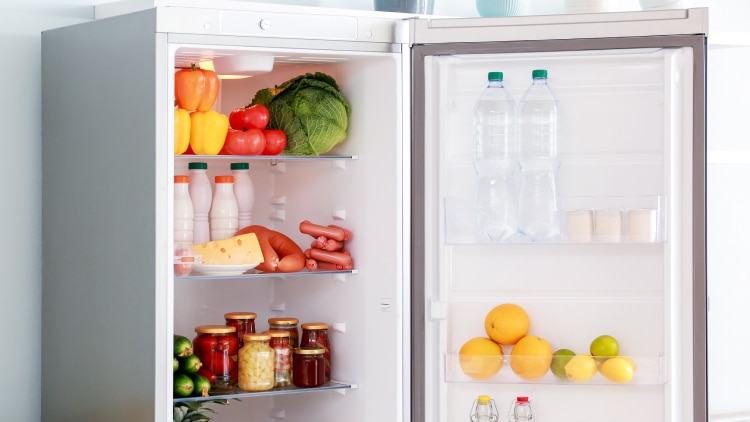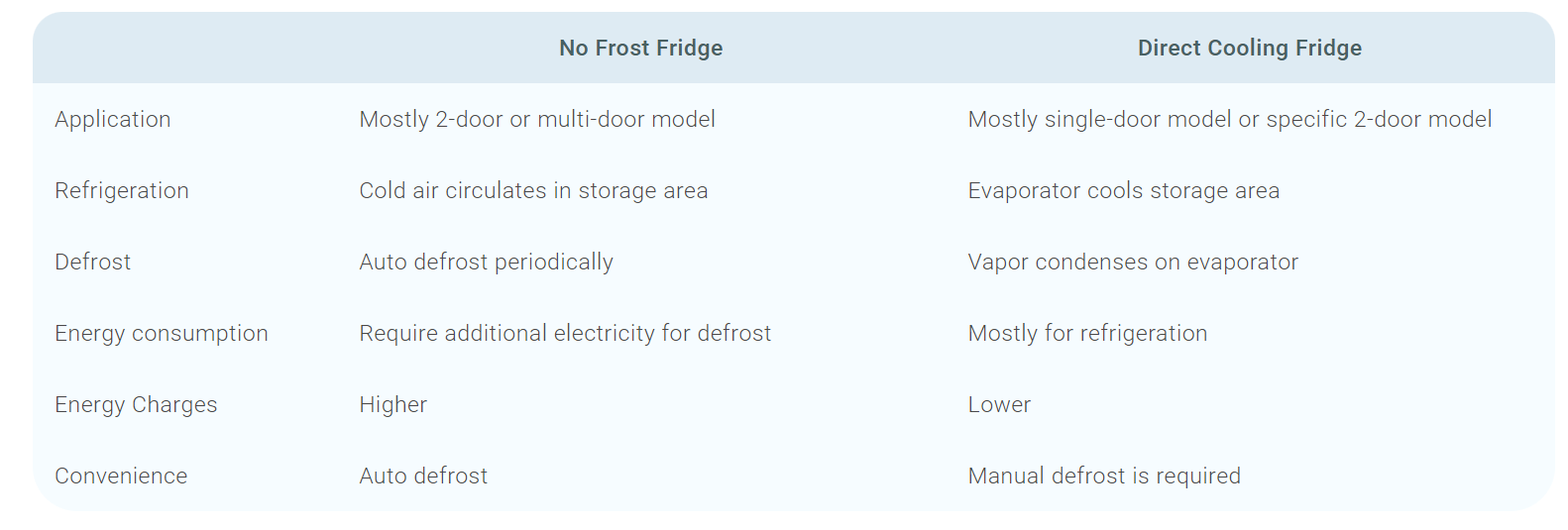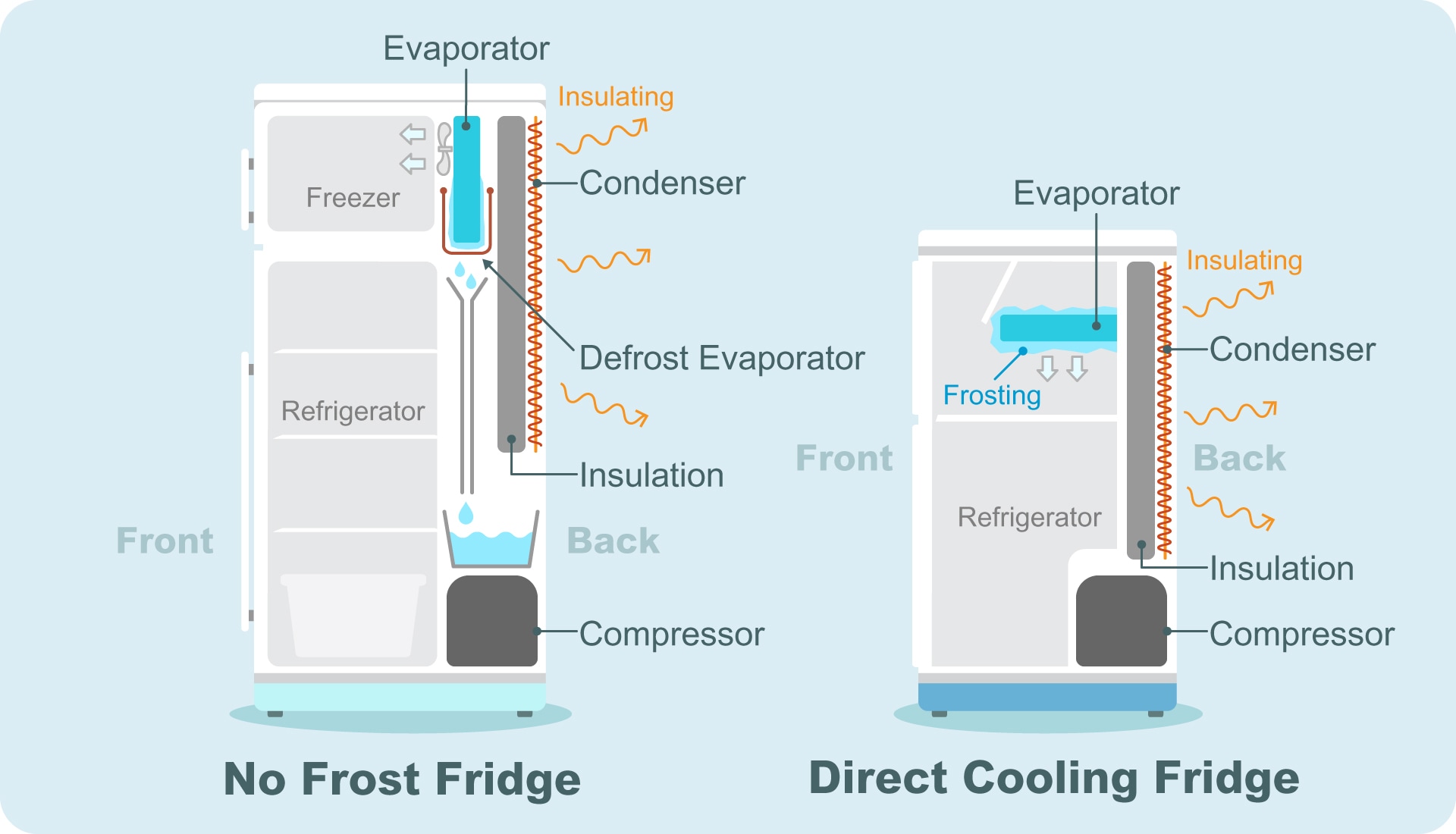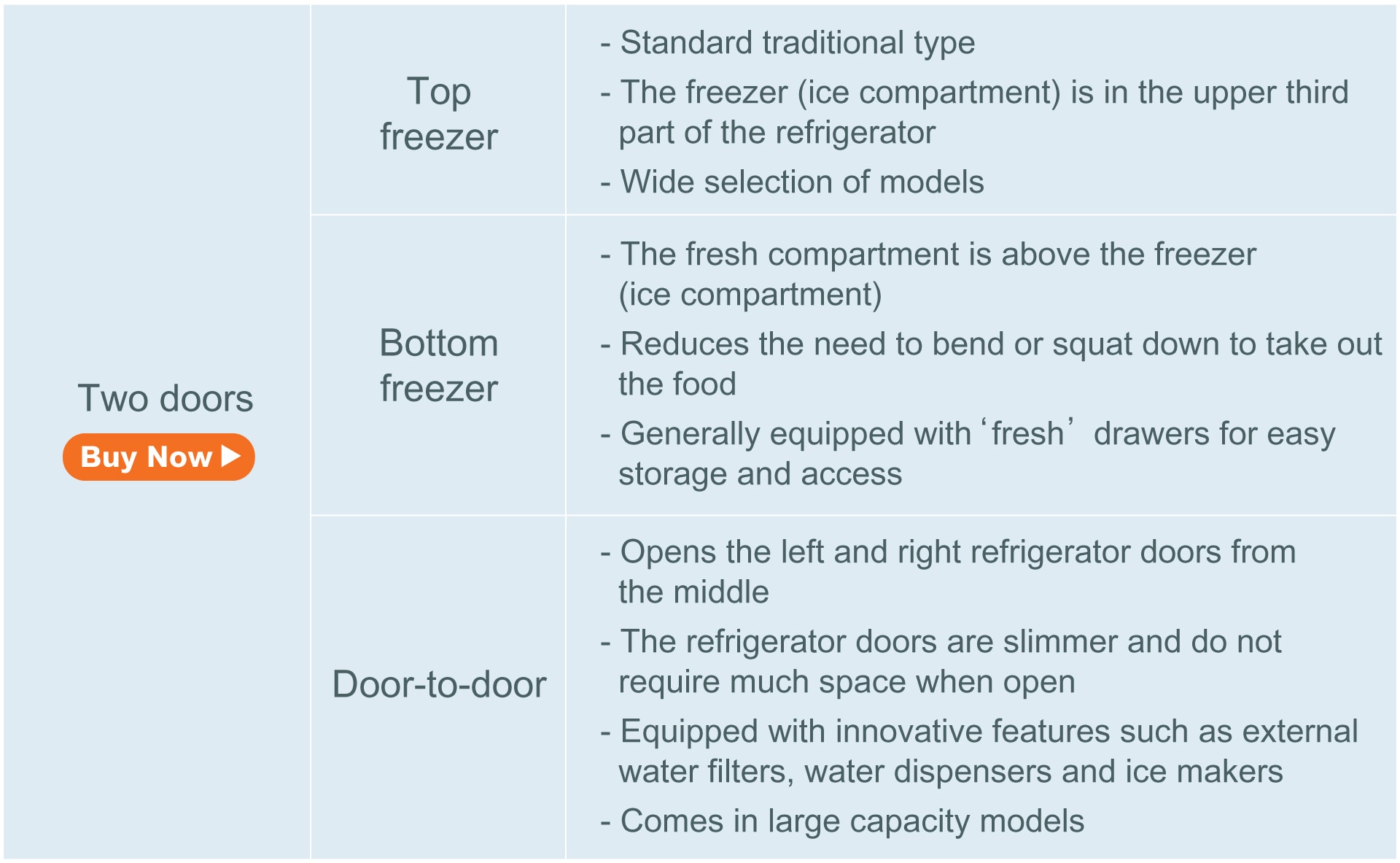

2025 Popular Fridge Shopping Guide & Recommendation
Is your fridge at home not cold enough? Does it provide enough space to store all your shopping items? Does it consume too much power, so your electricity bill is high? Or is it simply getting old? If your fridge has any of theses issues, it’s probably time to get a new one. Although refrigerators are all pretty similar, but which one is the best? Let's look at some tips to help you find the right one for your needs.
Fridge Shopping Tips
1. Space for Fridge
The first thing you need to consider is how much space you have at home. You also need to reserve 5cm at the top and 5mm on both sides of the fridge to ensure enough ventilation and for heat to disperse easily.
2. Fridge Size
When choosing the size (capacity) of a refrigerator, you need to consider the size of your family and your habits. If you have a big family and you need to store lots of food, you should obviously consider a large fridge. But if there are only one or two of you in your family, a small fridge will probably be sufficient. Use the formula below to help you calculate the ideal size: Number of Family Members x 70L + 170L (100L of daily food and 70L stand by food).
Based on this formula, a family of two will require at least a 310L refrigerator, while a family of five will need at least a 520L refrigerator. Note that this is just a rough estimate and is for reference only.
3. Number of Door
Refrigerators are generally classified into one door, two-door and multi-door types. The most common two-door refrigerator is further divided into three subtypes: top freezer, bottom freezer and door-to-door.
4. Fridge Motor
Refrigerator motors are divided into inverter and non-inverter types. Inverter refrigerators generally use up to 20% less power than standard refrigerators as they adjust the power they use according to load and temperature differences. This also reduces wear and extends equipment life. However, the invertor types generally cost more.
5. Fridge Temperature
In general, the optimum temperature of a standard two compartment refrigerator is about 4°C on average in the fresh compartment and about -18°C on average in the freezer compartment. To avoid the problem of too high or too low temperature difference, the refrigerator comes with a manual temperature control. Some refrigerators are equipped with built-in computerised temperature controls for users to pre-set temperature.
6. Energy Efficiency
A refrigerator accounts for around 14% of total household electricity consumption. Buying an energy-saving refrigerator is both environmentally friendly and helps to reduce your electricity bills. Before you buy, look for the Energy Efficiency Grading Label on the fridge. This will show one of five levels. Level 1 (green) is the most energy efficient. Also pay attention to the Annual Energy Consumption Label to compare the energy efficiency of different models.
7. Fridge Features
There are different fridge with various model and features on the market. Users could choose according to their personal perference and needs. Common one would be no frost fridge and direct cooling fridge


8. Special Features
Some brands may offer special features for their refrigerators. For example, HITACHI 6-Door IoT Smart Inverter Fridge is equipped with a Selectable Zone function with two independently controlled upper and lower compartments. By simply switching the temperature settings, it can adapt to different family lifestyles. In addition, LG InstaView Door-in-Door™ Refrigerator (422L) / (647L) has glass mirror technology that enables users to simply tap the mirror twice to make it transparent, so that you can see the food inside without having to open the door. This reduces the loss of cold when the door Is open to help keep your food fresher.
Fridge Q&A
Q: What is the best way to store food?

Q: How often do I need to clean a refrigerator?
A refrigerator should be cleaned at least once every three months. More stains will appear with more frequent use. Regular cleaning is required as stains in the refrigerator can harbour bacteria.
Q: How to clean a refrigerator?
Step 1: Before cleaning, turn off the power and store the food in a cool bag
Step 2: Clean the shelves
Remove inside shelves. Use a kitchen paper soaked in warm water and apply to any stains or use a 1:1 vinegar to water mix to clean shelves. Alternatively, add a little water to some baking powder and salt to turn it into a paste. Dip a cleaning sponge into the paste to remove stains. Salt has the dual function of acting as a scrubbing agent and a steriliser.
Step 3: Clean the inside of refrigerator
Use a 1:1 vinegar to water mix and saturate the interior with a spray can. Close the refrigerator door and wait for 15 minutes. Finally wipe with a damp cloth and use an old toothbrush to complete cleaning.
Step 4: Clean the refrigerator door
Add 2 tablespoons of baking powder into 1L of warm water and wipe all over.
Step 5: Clean the bottom drip tray
Wipe with 1L of warm water with 2 tablespoons of baking powder added to remove mould. Dry thoroughly before returning the drip tray to its original place.
Step 6: Clean the vents
Use a vacuum cleaner or a soft-bristled toothbrush to clean the ventilation grille. Never use a damp cloth to avoid rust.
Q: How to save energy?
In addition to choosing a refrigerator with an inverter motor and Level 1 Energy Efficiency Grading Label, the following energy saving tips are also useful:
- After you remove food from the refrigerator, close the door immediately. Reduce the number of times you open the door to prevent loss of cold air.
- Let any hot or heated food cool down before placing it into the refrigerator to avoid overloading the fridge and save power.
- Adjust the thermostat according to the type and quantity of food stored in the refrigerator.
- During winter or if away from home for a long time, set the refrigerator to power saving mode. If the fridge is not going to be used for a long time, turn the power off.



